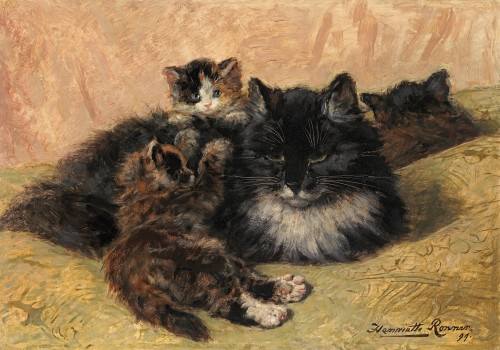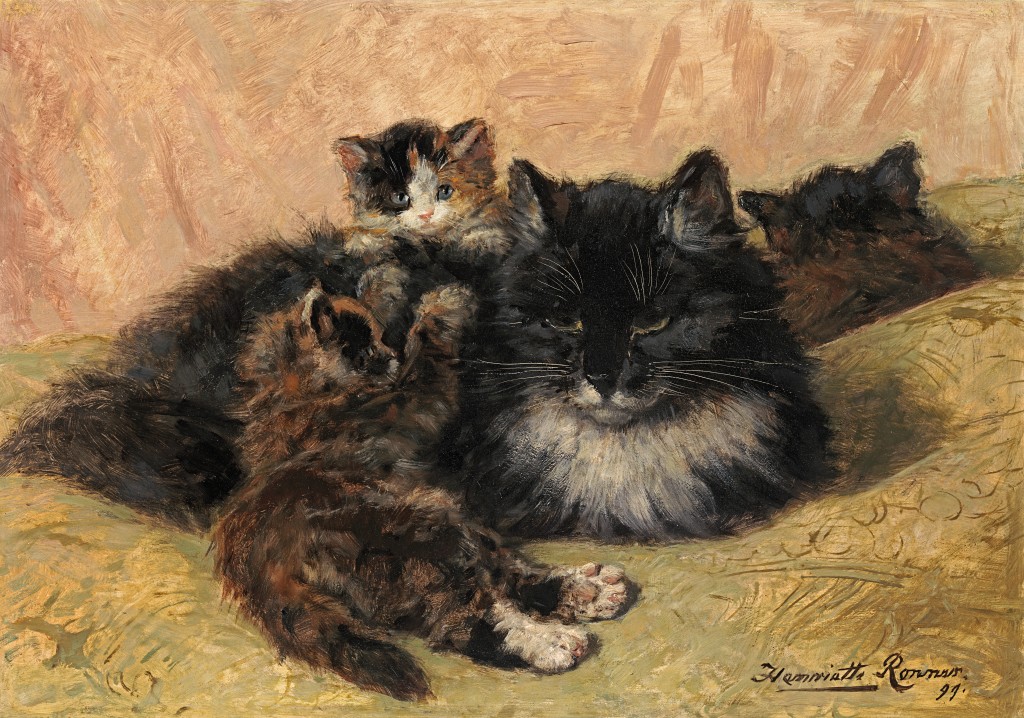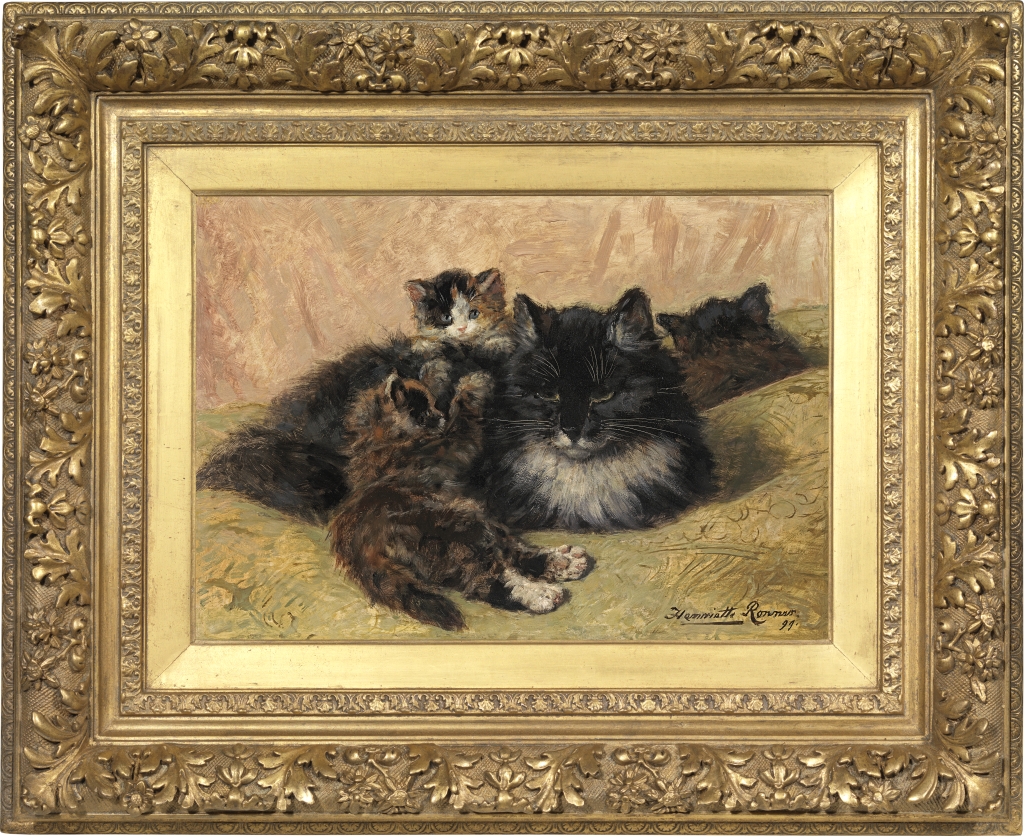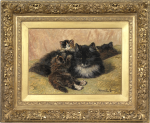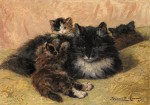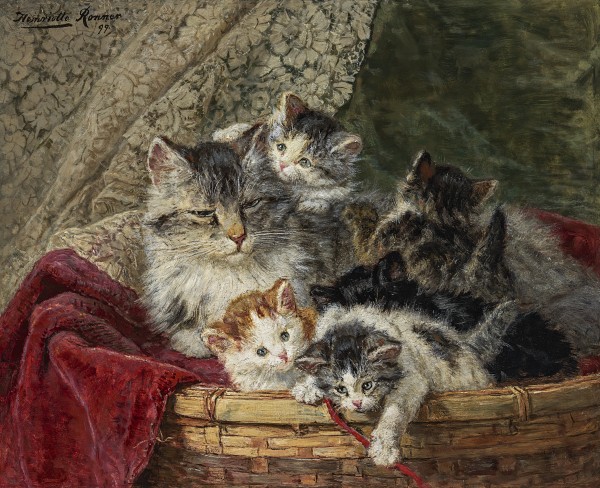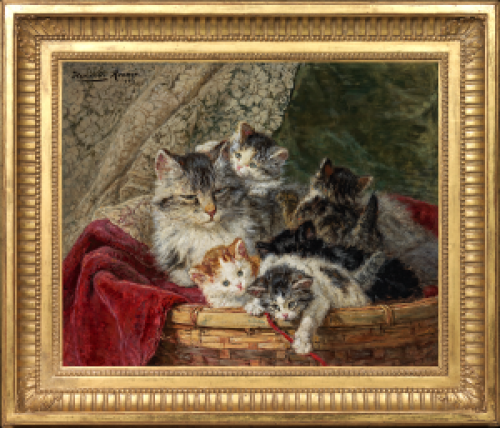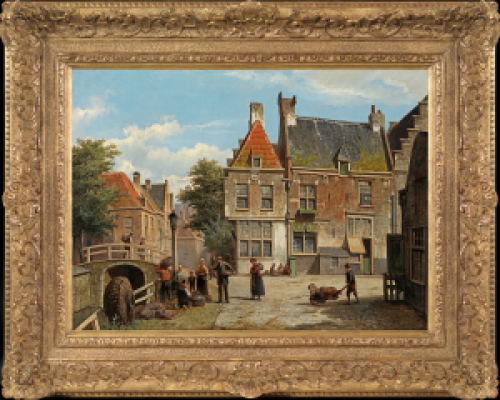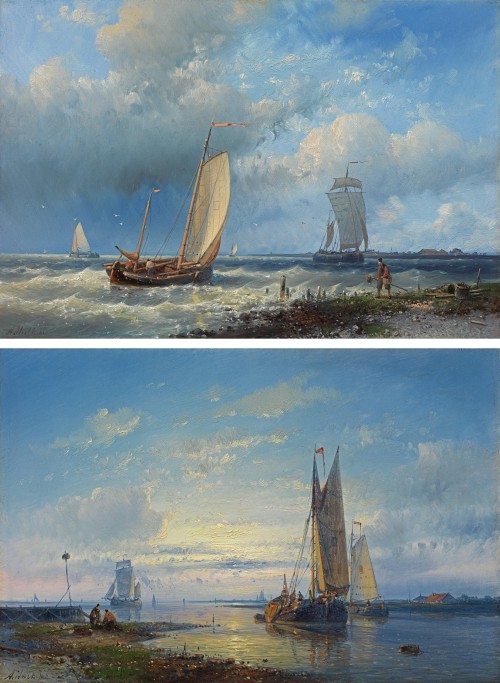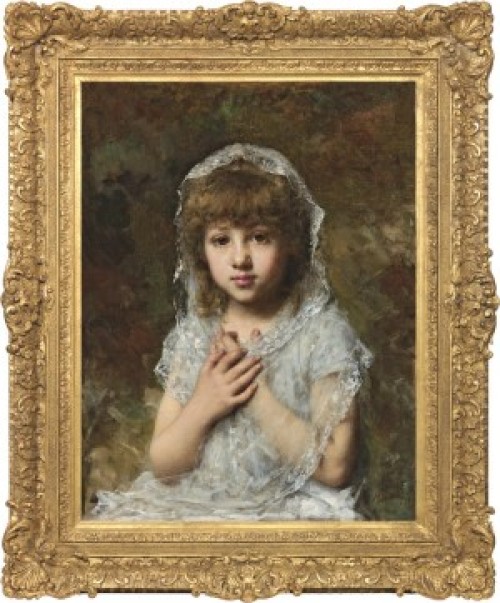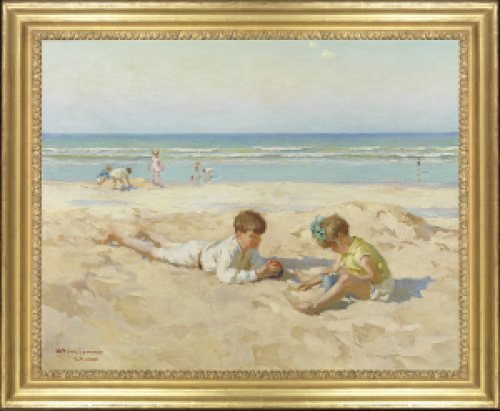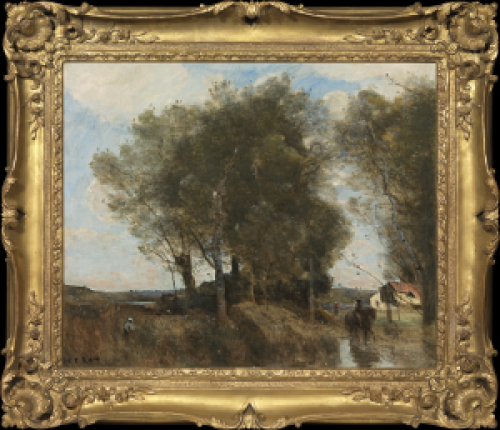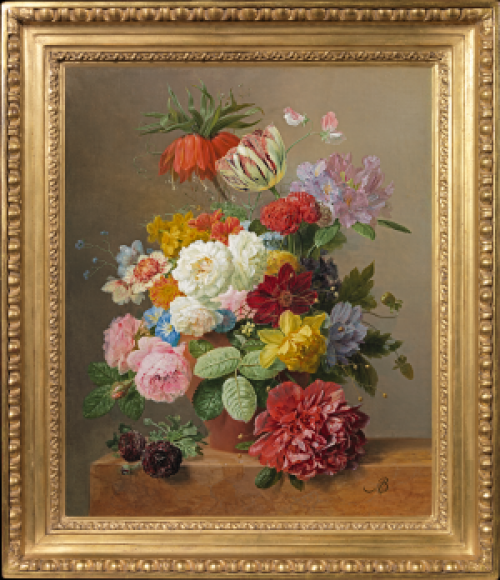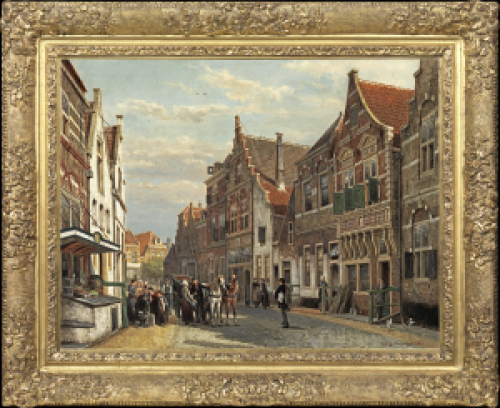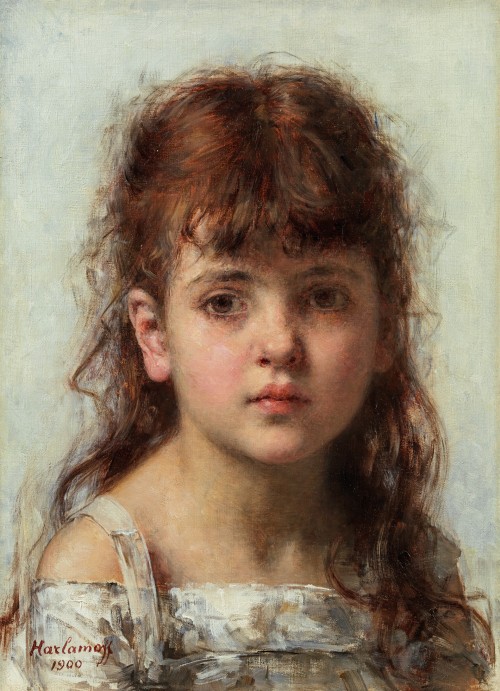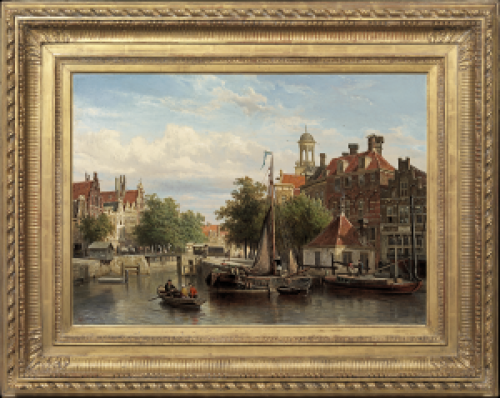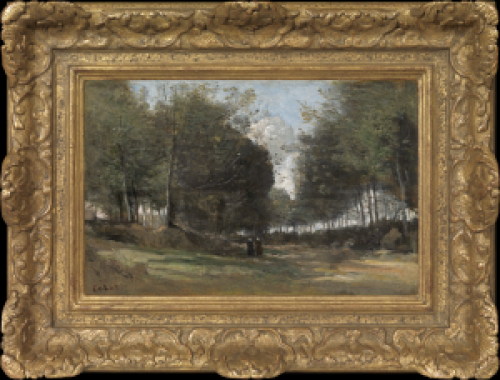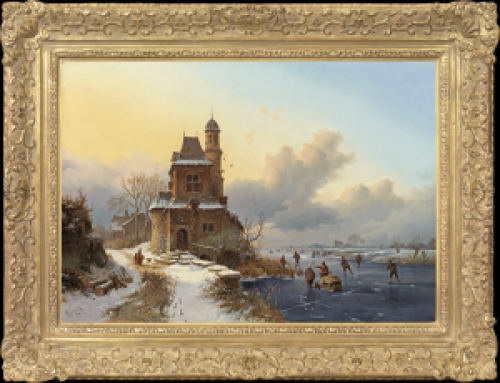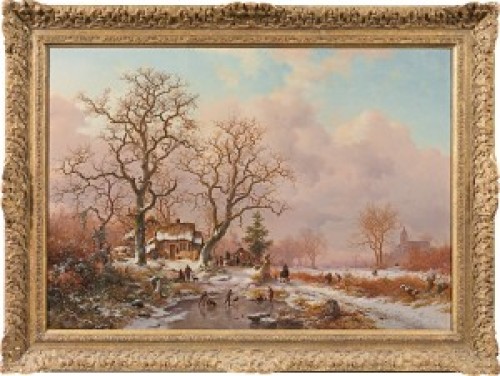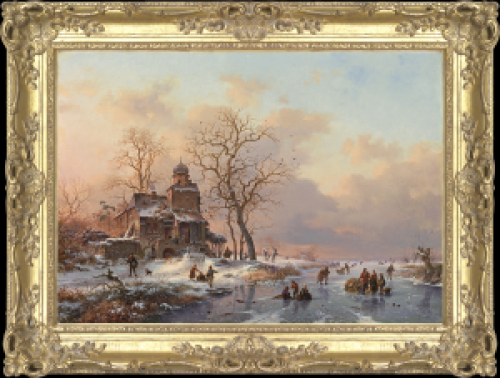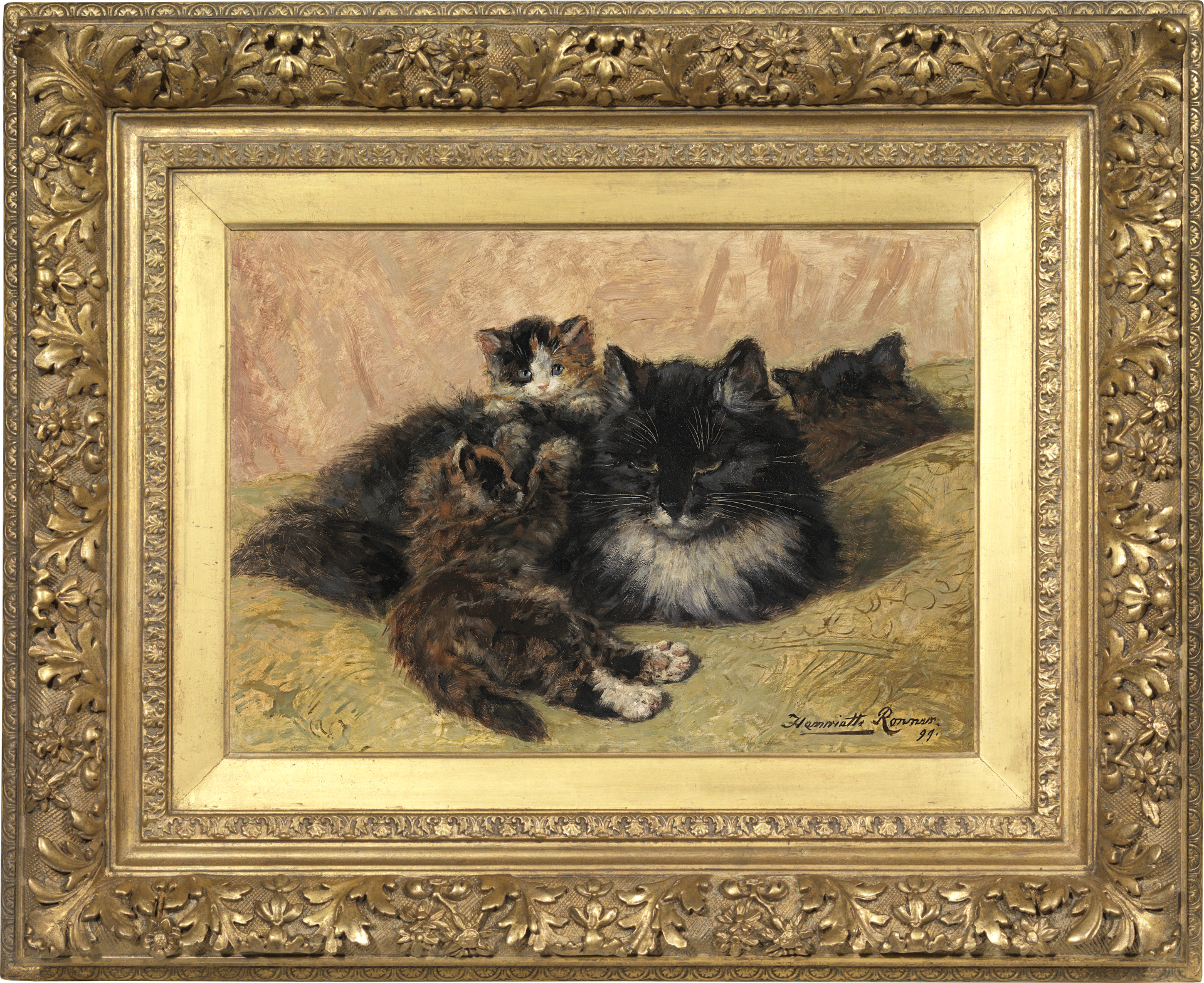HENRIETTE RONNER-KNIP
Amsterdam 1821 - 1909 Brussels
Ref: BZ 120
A gentle provocation
Signed and dated lower right: Henriette Ronner. / 99; inscribed with the title and the artist's address on a label attached to the frame: Madame Henriette Ronner /57 Chaussée de Vleurgat / Brussels / A gentle provocation
Oil on panel: 12 ¾ x 18 ⅛ in / 32.4 x 46 cm
Frame size: 23 x 28 ½ in / 58.4 x 72.4 cm
Provenance:
Private collection, UK
From prehistory to the present day, the cat has inspired delight, affection and even worship; the goddess of the moon in ancient Egypt took the form of an elegant cat. Artists have often included cats on the peripheries of their most celebrated works; both Paul Veronese in his The Marriage of Cana and Rembrandt van Rijn in his Carpenter’s Shop, both in the Louvre, include cats in their compositions. Artists and writers in the nineteenth century devoted renewed attention to feline models from Holman Hunt’s The Awakening Conscience at Tate Britain to Steinlen’s hundreds of posters and popular illustrations of cats. The naturalist novelist Joris Karl Huysmans even included a cat as a charming leitmotif in his infamous novel about the occult, La-Bas. Ronner-Knip holds a unique place in this prestigious lineage of artistic cat lovers.
Ronner-Knip achieved the immediacy and sincerity of her cat paintings by rigorously studying her feline models. She built a special glass-fronted miniature studio in which her cats strolled about, slept and played undisturbed by the artist as she sketched. In the present work, Ronner-Knip captures the adorable, indolent disposition of three pampered kittens and their sleeping mother with unrivalled charm and unerring excellence of execution. With lively, impressionistic brushwork and short, scratch marks made with the end of the brush, the artist successfully simulates the soft, downy fur and whiskers of each individual cat. The sumptuous pink, green and gold coloured fabrics which surround them suggest a luxurious domestic interior; a wealthy home owned by a loving family.
Henriette Ronner, Happy days, c.1895
Oil on wood: 24 x 28.6 cm
Atkinson Art Gallery, Southport
Henriette Ronner-Knip is perhaps best known for her paintings of dogs and cats, but it was not until her later life that she specialised in these genres. She came from a family of artists and received her earliest tuition from her father Joseph Augustus Knip (1777-1847). At the age of fifteen, she sold her first painting in an exhibition at Dusseldorf.
During her early years, Ronner-Knip painted many subjects including genre scenes, landscapes and still lifes. In 1850, she married Telco Ronner and they moved to Brussels where she was to spend the rest of her life. In 1860, she exhibited a painting entitled La mort d’un ami which was highly acclaimed, establishing her reputation as a painter of dogs. The Queen of Belgium commissioned her to paint two of her favourite lap-dogs in 1876 and the success of these works led to many more commissions. Ronner-Knip counted most of the crowned heads of Europe amongst her patrons. Among her most prestigious clients were the King of Hanover, Don Fernando King of Portugal, Emperor Wilhelm I King of Prussia, Baron Tindal of Amsterdam, the Duchess of Edinburgh and the Princess of Wales. She began to paint cats in works that were popular for their humorous and anthropomorphic characterisation. These domestic pets were often depicted in luxurious interiors, lying on silk cushions and chairs or playing in fancy baskets.
Ronner-Knip exhibited widely throughout her career and was elected to many artistic societies. The ‘Natura Artis Magistra’ Society of Amsterdam elected her to membership in 1850 and Ronner-Knip was made a member of merit in the Academy of Painting and Drawing in Rotterdam in 1861. Her paintings won medals in exhibitions around the world, including two bronze medals, one vermeil medal, five silver medals and six gold medals. The King of The Netherlands also presented her with a ‘Unique Medal of Merit’ in 1874. Her international reputation was confirmed at the prestigious Worlds Fairs. First by an artistic medal at the Centennial Exhibition held in Philadelphia in 1876, then by a gold medal at the Colonial and International Exposition held in Amsterdam in 1883 and a silver medal at the Universal Exhibition held in Edinburgh in 1883.
Ronner-Knip was awarded the Cross of the Order of Léopold in 1887 by Léopold II King of the Belgians, an honour rarely bestowed upon a woman artist. In 1891, a Henriette Ronner Album was published with twelve reproductions of her most famous works. She died in Brussels in 1909.
The work of Ronner-Knip is represented in several museums including the Gemeentemuseum, The Hague, the Rijksmuseum, Amsterdam and the Dordrechts Museum.

